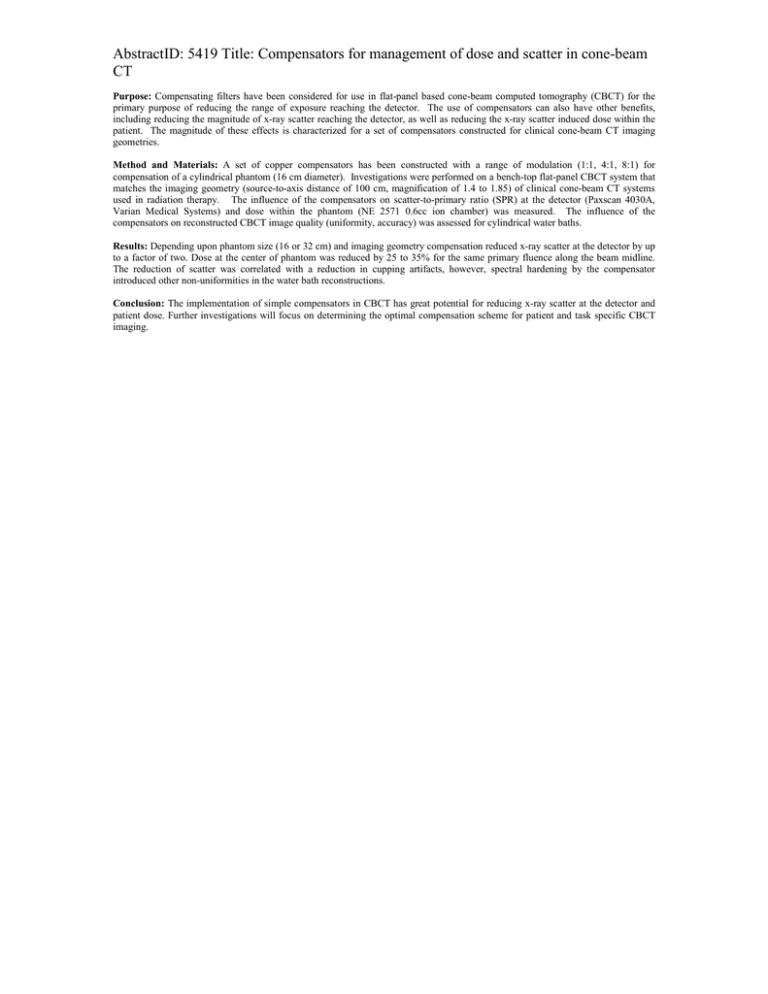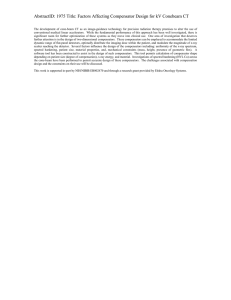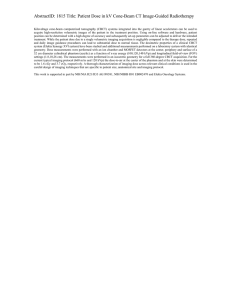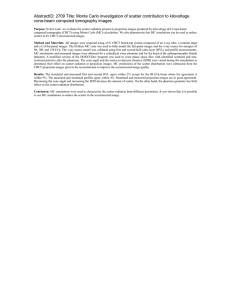AbstractID: 5419 Title: Compensators for management of dose and scatter... CT
advertisement

AbstractID: 5419 Title: Compensators for management of dose and scatter in cone-beam CT Purpose: Compensating filters have been considered for use in flat-panel based cone-beam computed tomography (CBCT) for the primary purpose of reducing the range of exposure reaching the detector. The use of compensators can also have other benefits, including reducing the magnitude of x-ray scatter reaching the detector, as well as reducing the x-ray scatter induced dose within the patient. The magnitude of these effects is characterized for a set of compensators constructed for clinical cone-beam CT imaging geometries. Method and Materials: A set of copper compensators has been constructed with a range of modulation (1:1, 4:1, 8:1) for compensation of a cylindrical phantom (16 cm diameter). Investigations were performed on a bench-top flat-panel CBCT system that matches the imaging geometry (source-to-axis distance of 100 cm, magnification of 1.4 to 1.85) of clinical cone-beam CT systems used in radiation therapy. The influence of the compensators on scatter-to-primary ratio (SPR) at the detector (Paxscan 4030A, Varian Medical Systems) and dose within the phantom (NE 2571 0.6cc ion chamber) was measured. The influence of the compensators on reconstructed CBCT image quality (uniformity, accuracy) was assessed for cylindrical water baths. Results: Depending upon phantom size (16 or 32 cm) and imaging geometry compensation reduced x-ray scatter at the detector by up to a factor of two. Dose at the center of phantom was reduced by 25 to 35% for the same primary fluence along the beam midline. The reduction of scatter was correlated with a reduction in cupping artifacts, however, spectral hardening by the compensator introduced other non-uniformities in the water bath reconstructions. Conclusion: The implementation of simple compensators in CBCT has great potential for reducing x-ray scatter at the detector and patient dose. Further investigations will focus on determining the optimal compensation scheme for patient and task specific CBCT imaging.



